Dickensians! discussion

This topic is about
The Cricket on the Hearth
Novellas and Collaborative Works
>
The Cricket on the Hearth (hosted by Petra)
 Happy Holidays Everyone!
Happy Holidays Everyone! I'm looking forward to reading and discussing another of Charles Dickens' Christmas stories with you all.
In the next three posts, I'll have links to the first post (my summary) of each day's discussion so that we can all find our places as we move through the book.
Enjoy this read in the relaxing way that the author would have wanted us to. Happy reading, everyone, and Happy Holidays.
We will begin our discussion of this wonderful story on December 20th.
 Chirp The First
Chirp The FirstMy ereader states that Chirp The First is 80 pages in length. Please use this number as a reference to get an idea of where in the story to find the "To" quotes below.
Summary 1: Link to Summary in Post 14
From: beginning of story
To: "....which word, though only differing from fondling by one vowel's length, is very different in meaning and expresses quite another thing." (page 29 of 80)
Summary 2: link to Summary in Post 42
From: "To have seen little Mrs. Peerybingle come back with her husband......"
To: "....while Tilly Slowboy, with a melodious cry of 'Ketcher, Ketcher' -- which sounded like some unknown words, adapted to a popular Sneeze - erformed some cow-like gambols round tha all unconscious Innocent." (page 45 of 80)
Summary 3: link to Summary in Post 61
From: 'Hark! He's called for, sure enough,' said John.
To: "But, a bridegroom he designed to be." (page 57 of 80)
Summary 4: link to Summary in Post 75
From: "In three days' time."
To: "So, with another sharp look round the room, he went out the door; followed by Caleb with the wedding-cake on his head." (page 69 of 80)
Summary 5: link to Summary in Post 88
From: "The Carrier had been so much astounded by his little wife....."
To: the end of Chirp The First (80 pages of 80)
 Chirp The Second
Chirp The SecondMy ereader says this section is 91 pages long.
Summary 1: Link to summary in Post 100
From: beginning of section
To: "For all the Cricket Tribe are potent Spirits.....as the Voices in which the Spirits of the Fireside and the Hearth address themselves to human kind." (page 5 of 91)
Summary 2: Link to Summary in post 111
From: "Caleb and his daughter were at work together in their usual working room....."
To: "But, trivial things, invented and pursued for bread, become very serious matters of fact....." (page 10 of 91)
Summary 3: Link to Summary in post 122
From: " 'So you were out in the rain last night, father,......."
To: "How could the little man be otherwise than bewildered........" (page 16 of 91)
Summary 4: Link to summary in Post 137
From: " 'There we are,', said Caleb, falling back a pace or two......."
To: "Caleb knew that with his own hands he had brought the little rose-tree home for her..... that she might be the happier.." (page 24 of 91)
Summary 5: Link to summary in Post 143
From: " 'Bertha!', said Tackleton, assuming, for the nonce, a little cordiality. "
To: "And saying so, she laid her poor blind face on Caleb's shoulder, and so wept and wept,......." (page 33 of 91)
Summary 6: Link to summary in Post 155
From: "In the mean time, there had been a pretty sharp commotion at John Peerybingle's ....."
To: "....for he was proud to have his little wife admired, knowing that she didn't mind it - that, if anything, she rather liked it perhaps." (page 47 of 91)
Summary 7; Link to summary in Post 172
From: "The trip was a little foggy, to be sure...."
To: "....until Mrs. Peerybingle and the baby, and Miss Slowboy, and the basket, were all got safely within doors." (page 51 of 91)
Summary 8: Link to summary in Post 180
From: "May Fielding was already come...."
To: "Won't you, Mrs. Fielding?" (page 75 of 91)
Summary 9: Link to summary in Post 195
From: "Not even the Welsh Giant....."
To: the end of Chirp The Second (page 91 of 91
 Chirp The Third
Chirp The Thirdmy ereader says this section is 92 pages long.
Summary 1: Link to Summary in Post 214
From: beginning of section
To: "He reversed the gun to beat the stock up the door......" (page 7 of 92)
Summary 2: Link to Summary in Post 234
From: "When, suddenly, the struggling fire illumined the whole chimney....."
To: "Is this the light wife you are mourning for!" (page 15 of 92)
Summary 3: Link to Summary in Post 255
From: "There were sounds of gaiety outside....."
To: "And when they found her thus......and forgot him altogether." (page 21 of 92)
Summary 4: Link to Summary in Post 276
From: "Thus the night passed."
To: "The Carrier stood looking after him......unwilling to return until the clock was on the eve of striking." (page 40 of 92)
Summary 5: Link to Summary in Post 286
From: "His little wife, being left alone....."
To: "If I could be restored to sigh..... My sister!" (page 46 of 92)
Summary 6: Link to Summary in Post 302
From: "Bertha, my dear, said Caleb"
To: "Her afflicted father hung his head....." (page 49 of 92)
Summary 7: Link to Summary in Post 312
From: "She had been but a short time in this passion of regret...."
To: ""And I am NOT blind, my father...." (page 55 of 92)
Summary 8: Link to Summary in Post 324
From: "Dot's whole attention had been concentrated...."
To: "And honour to the Cuckoo too.....as if he had got drunk for joy!" (page 60 of 92)
Summary 9: Link to Summary in Post 333
From: "The Carrier, entering, started back."
To: ".....until I whispered in her ear at that fireside, and she so nearly betrayed me." (page 64 of 92)
Summary 10: Link to Summary in Post 334
From: "But when she knew that Edward was alive......"
To: "There never were congratulations so endearing and delicious, as those she lavished....." (page 66 of 92)
Summary 11: Link to Summary in Post 349
From: "Amid the tumult of emotions in his breast, the honest Carrier had stood, confounded."
To: "It was the most complete, unmitigated, soul-fraught little piece of earnestness...." (page 70 of 92)
Summary 12: Link to Summary in Post 360
From: "You maybe sure the Carrier was in a state....."
To: "With these words he carried it off....as a means of informing him that there was a screw loose in his arrangements." (page 74 of 92)
Summary 13: Link to Summary in Post 371
From: "Of course it became a serious duty now, to make sch a day of it....."
To: "And old Dot - so to call Dot's father - took liberties and shook hands at first sight.....but, of course, my dear." (page 80 0f 92)
Summary 14: Link to Summary in Post 388
From: "I wouldn't have missed Dot, doing the honours....."
To: "Hark! how the Cricket joins the music with its Chirp....." (page 91 of 92)
Summary 15: Link to Summary in Post 405
Epilogue
 First, before we begin the story, a little bit about the history of the publication of the book and it's adaptations:
First, before we begin the story, a little bit about the history of the publication of the book and it's adaptations:The Cricket on the Hearth was first published on December 20, 1845.
Happy 178th Birthday, Cricket!
Dickens began writing the book around 17 October 1845 and finished it by 1 December. Like all of Dickens's Christmas books, it was published in book form, not as a serial.
It was illustrated by Daniel Maclise, John Leech, Richard Doyle, Clarkson Stanfield and Edwin Henry Landseer.
The book sold briskly into the New Year of 1846.
Seventeen stage productions opened during the Christmas season 1845, with one production receiving Dickens's approval and opening on the same day as the book's release.
Dickens read the tale four times in public performance.
It has been dramatized in numerous languages and for years was more popular on stage than A Christmas Carol.
The book was a big success but some reviews considered it too sweet and sentimental. William Makepeace Thackeray, however, enjoyed the boook immensely: "To us, it appears it is a good Christmas book, illuminated with extra gas, crammed with extra bonbons, French plums and sweetness.”
Stage adaptations include the successful The Cricket on the Hearth by Albert Richard Smith produced at the Surrey Theatre in 1845 to when Rankin/Bass Productions produced a 50-minute animated television adaptation of the story in 1967.
 Rankin/Bass Productions, founded and formerly known as Videocraft International, Ltd. and Rankin/Bass Productions, Inc., was an American production company located in New York City, and known for its seasonal television specials, usually done in animation.
Rankin/Bass Productions, founded and formerly known as Videocraft International, Ltd. and Rankin/Bass Productions, Inc., was an American production company located in New York City, and known for its seasonal television specials, usually done in animation. Rankin/Bass' productions are recognizable by their visual style of doll-like characters with spheroid body parts and ubiquitous powdery snow using an animation technique called "Animagic".
Nearly all of the studio's animation was outsourced to Japanese animation companies. Rankin/Bass was one of the first western studios to outsource their low-budget animated television and film productions to animation studios in foreign countries.
 Thanks for the info, Petra! Dec 20 is our anniversary. How lovely. Have my book set. Looking forward to reading along.
Thanks for the info, Petra! Dec 20 is our anniversary. How lovely. Have my book set. Looking forward to reading along.
 unbenownst I started to read this today, I'll save my comments until tomorrow. so exited to share the experience with you!!!
unbenownst I started to read this today, I'll save my comments until tomorrow. so exited to share the experience with you!!!
 Antoinette and Omar, I'm so glad that you'll both be reading this along with me.
Antoinette and Omar, I'm so glad that you'll both be reading this along with me.Omar, that is a coincidence! I'm glad you found this thread and am looking forward to your thoughts.
 Summary 1:
Summary 1:A debate starts the story, told by an omnipotent narrator. A debate on whether the kettle or the cricket started “it”. The “it” is said to be a “match or trial of skill” between the kettle and the cricket.
Mrs. Peerybingle goes outside, wearing a pair of pattens, to fill the kettle at the water pump. In doing so, she loses her pattens and the cold water splashes over her toes.
The kettle, too, was fighting her efforts. The kettle wouldn’t sit right on the bar, it dribbled water onto the coals. It wouldn’t settle or stop swinging. The lid turned upside down, then slipped into the kettle.
She momentarily loses her temper but then sits herself down and laughs at the situation. The clock strikes six. It’s a Dutch cuckoo clock described as showing a haymaker cutting grass with each strike of the clock.
The kettle begins to sing. The steam swirls merrily. The lid dances a jig and clatters like a cymbal from the bottom of the kettle. The kettle sings a song of welcome and Mrs. Peerbingle waits with welcome as well.
Then the cricket chirped! A loud chirp. An unseen cricket with a very loud sound. The two voices of kettle and cricket work harmoniously together.
Mrs. Peerybingle looks at the clock with its haymaker, she then tries looking out the window. She returns to her chair by the fire.
The kettle boils over and Mrs. Peerybingle takes it off the fire,
then rushes to the door to open it to a homecoming scene of wagon wheels, dogs barking, the voice of the man and, ….. a baby! …..Mrs. Peerybingle is carrying a baby! She is gently brought back to the fire by the man, much taller and older than she is, who stoops to kiss her.
John Peerybingle jokes with his wife, Dot Peerybingle, coming “near” a joke. He’s often “near” something clever. He’s a good man. Rough and dull on the outside, gentle and quick on the inside. He is large and heavy, yet light in spirit. He is a good man through and through. John is a Carrier by trade.
It is a pleasant and happy scene: Dot resting her head on John, while both look at the baby. The young nursemaid, Tilly Slowboy, still in her teens, waited in the background, taking in the picture of the happy family.
Both Peerybingles admire their son. John comments on the baby always sleeping or squinting his eyes. Dot teases him about his lack of knowledge of babies.
Dot gives the baby to Tilly and makes the tea. John goes out to see that the horse and wagon are taken care of for the night. The dog, Boxer, runs around the yard and into the house, then back into the yard.
As Dot prepares the table, she admonishes Tilly to not drop the baby. Tilly has a talent for putting the baby in precarious situations such as hitting its head on doors, dressers, rails, etc. with her distracted ways. Tilly is grateful for being so well treated and given a home in the household. She’s a foundling and hasn’t known much care.
 Pattens are a pair of overshoes that raise one up above any muck, water or dirt in the yard or on the floors. They help to keep the owners shoes and clothes clean.
Pattens are a pair of overshoes that raise one up above any muck, water or dirt in the yard or on the floors. They help to keep the owners shoes and clothes clean. 
 A Carrier is a driver of a wagon for transporting goods.
A Carrier is a driver of a wagon for transporting goods. In a way, John Peerybingle is an old-fashioned UPS driver. LOL.

 I found this description of how Foundlings were to be treated in the Foundling Hospital of London (founded in 1739):
I found this description of how Foundlings were to be treated in the Foundling Hospital of London (founded in 1739):At the age of five years the children are returned to the Hospital. They are then placed in the schools; where they are gradually accustomed to regular and early habits of order and attention…
The boys make and mend their own clothes, and are taught reading, writing, and accounts, according to the system of Dr Bell. The girls are also taught to read and write on the same principle…
The boys and girls are kept entirely separate. The elder girls are employed in household work, and assist as servants in the kitchen, laundry, and other rooms in the eastern wing of the Hospital…
The returned Children are to be clothed immediately in the dress of the Hospital. Prayers to be read in the School in the morning and in the evening. At eight o’clock the Children are to breakfast; one hour being allowed them for that purpose. The rest of the morning till twelve, is to be spent in their labour, or at school.
From twelve to two is allowed for dinner, diversion, and rest; at two, they are to return to their work, or to school, till five in the summer, and till it is dark in the winter.
From that time till supper, which is to take place at six o’clock in the evening, the Children may play in the open air, or in the covered buildings. No boy is to be suffered to go out of the Hospital gate on errands, without permission of the Committee.
On Sundays, and other days appointed for public worship, they are to be instructed in the principles of religion and morality, to attend at Chapel, to be taught the catechism used by the church of England, or heard to read such parts of the Holy Scripture as are most suitable to their understanding.
On public holidays, and at play hours, they may be allowed to divert themselves with such exercises, as will increase their strength, activity, and hardiness; but are never to be allowed to play at games of chance.
The girls are to be kept in wards, entirely separate from the boys, to be dressed plain and neat, to rise at the same hours with the boys, to clean the house, make the beds, and do the household business till the hour of breakfast; after that to be employed in school, or in making linen or clothes, or such other labour as is suitable for their age and strength…
The body linen of the Children is to be changed twice a week, and they are to have clean sheets once a month. Strong drink, coffee, and tobacco, are never to be permitted to be used by any Child in the Hospital…
Link to article: https://www.nationalarchives.gov.uk/e...
 The Carrier's Cart by Clarkson Stanfield, 1845
The Carrier's Cart by Clarkson Stanfield, 1845
A short biography of Clarkson Stanfield can be found here.
 Hello, everybody :)
Hello, everybody :)Jean and Petra, thank you for this wealth of information, and for sharing the artwork here.
Some random impressions from these pages...
I wonder who is telling this story. 'Why, I am not naturally positive. Every one knows that.' And this narrator obviously likes the Peerybingles. 'Now it was, you observe, that the kettle began to spend the evening.' This narrator is very inviting, and it looks like this person or spirit can commune with crickets and kettles.
I think Dickens often describes inanimate objects as animate, but this kettle really becomes a character in the story.
'... the boy with the lantern, which had been dancing to and fro before the door and window, like a Will of the Wisp'
This might be a foreshadowing of magical events :)
I see a lot of 'UPS drivers' daily and they're mostly young now. I always worry that they are underpaid, though I'm not sure why - it's not that they look shabby; in fact, one of them looks pretty stylish. Petra, do you know if this was a low-paid job in Victorian times? Though the Peerybingle's maid is an orphan, I gather the family is at least not struggling if they can afford domestic help at all? But at the same time we have 'he was but a Carrier, by the way'. I guess John probably didn't have an employer and people were just paying to have their parcels delivered, or am I wrong here?
'...we can bear to have them talking prose'
This looks like a reference to Le Bourgeois Gentilhomme, but I'm not sure I understand this correctly. Mr. Jourdain is making a fool of himself by trying to 'upgrade' himself; does Dickens mean that he likes John for not pretending to be cleverer than he is?
John reminds me of Joe Gargery a bit, another seemingly simple, but very generous character, (view spoiler).
I love the quirky names, Peerybingle and Slowboy :)
I can see this dog, he's so vividly portrayed! Well, I guess I can see everybody vividly, but it was nice to see a dog :)
 Plateresca, thank you for starting us off on our discussion. What wonderful thoughts, too.
Plateresca, thank you for starting us off on our discussion. What wonderful thoughts, too. I'm watching the Narrator closely, too, to determine his role. It seems to be a friendly, caring role and (perhaps) one as a Witness). It's early in the story. Dickens may explain the Narrator's role soon.
I also loved the Kettle. It's a living part of a warm, happy family unit in a cozy setting.
The Cricket, too, is interesting. Around here, if there's a bug in the house, you don't let it live and become part of the family. Yet, here's a Cricket openly living in a home.
Together, they add to the coziness of the cottage.
Dickens does love his magical elements in the Christmas Season. The first two Christmas books, A Christmas Carol and The Chimes, both had magical/spiritual elements. I hope that Dickens continues this theme.
 I think, but am not sure, that John Peerybingle (I love the name, too) may be an individual contractor or worker. His cottage is so warm and, as you say, Plateresca, he has domestic help for his wife. He may have a boss that pays well, but it seems more likely that he's an independent worker.
I think, but am not sure, that John Peerybingle (I love the name, too) may be an individual contractor or worker. His cottage is so warm and, as you say, Plateresca, he has domestic help for his wife. He may have a boss that pays well, but it seems more likely that he's an independent worker. I also suspect that the money was in the volume of packages to be delivered. But as we know today, there are always packages that need delivery, so business was probably brisk, especially if John had a contract with a train station or other depot.
Perhaps Jean has more information on Victorian jobs and their social status.
I did find this article: https://victorian-era.org/victorian-e...
In the "Middle Class" section, it mentions that the Middle Class often owned their own businesses. Perhaps that's where a Carrier fits in. I'm not sure.
message 22:
by
Bionic Jean, "Dickens Duchess"
(last edited Dec 30, 2022 09:44AM)
(new)
-
rated it 4 stars
This is all marvellous information and commentary to start our read - thank you Petra (and Plateresca)
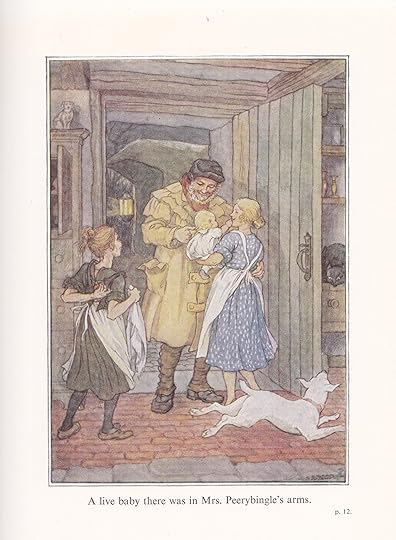
A live baby there was in Mrs. Peerybingle's arms - Francis D. Bedford"
I think the opening of The Cricket on the Hearth is one of Charles Dickens's most charming. I particularly love the personification of the kettle; and think it's one of his quirky best 😊
My assumption is that John Peerybingle is working class stock, but rising to the new lower middle class, since he is responsible for getting his own trade, and not an itinerant worker.

A live baby there was in Mrs. Peerybingle's arms - Francis D. Bedford"
I think the opening of The Cricket on the Hearth is one of Charles Dickens's most charming. I particularly love the personification of the kettle; and think it's one of his quirky best 😊
My assumption is that John Peerybingle is working class stock, but rising to the new lower middle class, since he is responsible for getting his own trade, and not an itinerant worker.
 The Bourgeois Gentleman is a new title for me and sounds quite entertaining. Thanks, Plateresca.
The Bourgeois Gentleman is a new title for me and sounds quite entertaining. Thanks, Plateresca. John is described as a solid, good man of good character. I like the interpretation that " them talking prose" means a straight forward, clear, open heart and spirit.
Boxer, the dog, is such a happy dog. He illustrates that the home is a happy, safe one. A dog knows when people are good and homes are safe.
 Edwin Henry Landseer (March 7, 1802 – October 1, 1873) was a sculptor and painter. His best-known works are the lion sculptures at the base of Nelson's Column in Trafalgar Square.
Edwin Henry Landseer (March 7, 1802 – October 1, 1873) was a sculptor and painter. His best-known works are the lion sculptures at the base of Nelson's Column in Trafalgar Square.Landseer was born in London, the son of the engraver John Landseer and Jane Potts. He was something of a prodigy whose artistic talents were recognised early on. At the age of just 13, in 1815, he exhibited works at the Royal Academy as an “Honorary Exhibitor”. He was elected an Associate there at the minimum age of 24, and an Academician five years later in 1831. He was knighted in 1850, and although elected to be president of the Royal Academy in 1866 he declined the invitation. In his late thirties Landseer suffered what is now believed to be a substantial nervous breakdown, and for the rest of his life was troubled by recurring bouts of melancholy, hypochondria, and depression, often aggravated by alcohol and drug use. In the last few years of his life Landseer's mental stability was problematic, and at the request of his family he was declared insane in July 1872.
Landseer's death on 1 October 1873 was widely marked in England: shops and houses lowered their blinds, flags flew at half mast, his bronze lions at the base of Nelson's column were hung with wreaths, and large crowds lined the streets to watch his funeral cortege pass. Landseer was buried in St Paul's Cathedral, London.
 English School was a dominant school of painting in England throughout the second half of the 18th century and the first half of the 19th.
English School was a dominant school of painting in England throughout the second half of the 18th century and the first half of the 19th. Its establishment marked the rise of a national tradition that began with the emergence of native artists whose works were no longer provincial but rivalled continental art in quality and ended by exercising considerable influence on the course of European painting.
 Hi Petra, Jean and Plateresca! I am joining in and reading CH with you all. I love your background information, Petra!
Hi Petra, Jean and Plateresca! I am joining in and reading CH with you all. I love your background information, Petra! I have never seen a pair of pattens before, they must have been a practical form of footwear. Nor did I know about the animated version of CH! Were the illustrations painted in colour?
As with so much of Dickens, I love the naming which is suggestive of character traits ... Peerybingle, Tilly Slowboy, Gruff and Tackleton (grumpy toy makers). Kettle, the cricket, Boxer the dog all present a nice little portrait of domestic happiness around the hearth.
 Notice the tag on the parcel in the cart in Boxer's illustration:
Notice the tag on the parcel in the cart in Boxer's illustration:Dickines Estate, London
LOL! Landseer is telling a joke. What fun!
I'm not sure whether that says Estate or some other E word. Establishment, perhaps?
 Nick, I'm glad you are enjoying this discussion. We hope to keep this active throughout. I'm so glad that you are joining us in this read.
Nick, I'm glad you are enjoying this discussion. We hope to keep this active throughout. I'm so glad that you are joining us in this read. I get such a kick out of Dickens' naming of his characters.
 I really like this illustration by John Leech. It portrays such a warm and cozy home.
I really like this illustration by John Leech. It portrays such a warm and cozy home.It's wonderful how he showed the singing of the kettle by having the choir singing in the steam.
 I tried to find a picture of a cuckoo clock with a haymaker & scythe but couldn't.
I tried to find a picture of a cuckoo clock with a haymaker & scythe but couldn't. Dickens described the clock so clearly that I thought for sure he either had such a clock or had seen one somewhere.
The closest to a haymaker and scythe that I could find was this cuckoo clock with a woodcutter and axe:

 Petra wrote: "Nick, I'm glad you are enjoying this discussion. We hope to keep this active throughout. I'm so glad that you are joining us in this read.
Petra wrote: "Nick, I'm glad you are enjoying this discussion. We hope to keep this active throughout. I'm so glad that you are joining us in this read. I get such a kick out of Dickens' naming of his characters."
Thank you for your welcome, Petra!
 Hi, this started great, with Dickens there is always something magical looming even in the most mundane, like the Kettle, the Watch and the Cricket.
Hi, this started great, with Dickens there is always something magical looming even in the most mundane, like the Kettle, the Watch and the Cricket.Dickens also has a very convincing way to make a house cozy by contrasting its warmth with the elements outside.
It's not clear to me if Tilly was living with them or lived somewhere else, any clarification would be appreciated.
the Peeribyngles seem so nice, I loved their playfull banter, and Dot's nickname
<<'I wish you wouldn't call me Dot, John. I don't like it', said Mrs. Peeribyngle: pouting in a way that clearly showed she did like it, very much.>> passages put a smile on my face.
also the presence of the Cricket nowadays would be taken negatively, it must take a particularly nice person to accept the cricket as a household member.
 I love all the background information you all have provided; it paints a vivid picture. I also was taken with the kettle's character, the quirky names and the loving relationship between Mr. & Mrs. P.
I love all the background information you all have provided; it paints a vivid picture. I also was taken with the kettle's character, the quirky names and the loving relationship between Mr. & Mrs. P. No one mentioned the baby. I'm a little confused about him/her. I thought perhaps it was an orphan brought home by John this night to add to the domestic bliss of the two but then when speaking about Tilly's "surprising talent for getting this baby into difficulties; and had several times imperiled its short life..." and later lists apparent incidents of bumping the baby into the dresser, bedposts, doors etc; which would lead me to believe that the baby has been in the home all along. Am I missing something?
 Petra wrote: "Boxer by Edwin Henry Landseer, 1845:
Petra wrote: "Boxer by Edwin Henry Landseer, 1845: " Boy this picture of Boxer makes him look fearsome instead of the excited, happy dog that is described. My edition has illustrations by Francis D. Bedford and his picture of Mr. & Mrs. P, Tilly & baby and Boxer was much more cozy & domestic.
 Interesting thought about the baby, Chris. I hadn't thought about it being anyone's but John & Dot's.
Interesting thought about the baby, Chris. I hadn't thought about it being anyone's but John & Dot's. It was introduced in a curious manner. I had to go back, when I first read this part, and read the previous paragraphs again to make sure I hadn't skipped over anything. But the story mentions that Dot was carrying the baby, so I assumed she had been the entire time but Dickens didn't tell us until that curious moment.
I agree that it was a strange way to introduce the little one.
 Thank you, Petra, for such a wonderful introduction.
Thank you, Petra, for such a wonderful introduction.I liked Dickens' descriptions of all the sounds and sights at the beginning of the story - the cuckoo clock, the kettle boiling over, and the cricket chirping. It seemed like such a busy, happy household.
My grandmother (who loved birds) had a cuckoo clock, and it was one of the highlights of a visit with her for the grandchildren.
There's a beautiful sentence about Dot sitting by the hearth, and lovingly anticipating John's return from his travels. The last of the setting sun lights up the clouds as the cold, dark night closes in:
"It's a dark night, sang the kettle, and the rotten leaves are lying by the way; and, above, all is mist and darkness, and below, all is mire and clay; and there's only one relief in all the sad and murky air; and I don't know that it is one, for it's nothing but a glare; of deep and angry crimson, where the sun and wind together; set a brand upon the clouds for being guilty of such weather; and the widest open country is a long dull streak of black; and there's hoar-frost on the finger-post, and thaw upon the track; and the ice it isn't water; and the water isn't free; and you couldn't say that anything is what it ought to be; but he's coming, coming, coming!"
 Chris, I also think that the illustration by Landseer makes Boxer look a bit mean.
Chris, I also think that the illustration by Landseer makes Boxer look a bit mean. The dog in "John's Arrival" looks more excited and friendly.
 Omar and Connie, I like how you both picked out the contrast of the outside coldness and the inside warmth. Dickens uses this contrast to emphasize the warmth of a loving home.
Omar and Connie, I like how you both picked out the contrast of the outside coldness and the inside warmth. Dickens uses this contrast to emphasize the warmth of a loving home. Omar, I think Tilly lives with the Peerybingles. Perhaps we'll find out otherwise but I think domestic help usually lived in the home, especially when having to care for a little baby, who may need help in the middle of the night. I could be mistaken, though.
 Summary 2:
Summary 2:John enters, carrying a basket, and the cricket starts to sing again. He remarks at the merry sound of the cricket. Dot states that to have a cricket on the hearth is the luckiest thing in the world. The cricket was first heard by Dot on the day she came to live in the house with John, about a year ago. It had filled her with a feeling of promise and encouragement. The year has been as promised by the cricket and she loves having it live on their hearth.
Dot speaks of her fears, when she came to his home, that he may not learn to love her, and the cricket’s voice had given her courage and strength to believe. John, surprised, assures her that he loved her long before she moved into the house.
She, busy rummaging through the basket of parcels, finds a wedding cake for delivery. Who is it going to? Why to Gruff and Tackleton the toymaker! Dot becomes contemplative.
The bride-to-be is young; the groom older than John. They are so unlike each other. Dot pushes the cake away with her shoe and remained deep in her thoughts. So deep, that John had to touch her arm to bring her attention back to him and the meal. The cricket has stopped chirping. Some cheerfulness has left the room.
Dot attempts conversation, asking about parcels. John remembers an old gentleman he had picked up on the side of the road. The gentleman was asleep in the straw on the cart. He’d quite forgotten him until now. He hurries out with a candle.
Tilly, disturbed about a stranger, starts to go to Dot’s side. As she crosses the doorway, she stumbles into the old gentleman and charges at him with the only thing at hand…..the baby. Boxer the dog, follows the man into the house. He’s been watching him carefully this entire time.
The old gentleman has long white hair, good looks, is bold and well defined. His eyes are dark and penetrating. He smiles and greets Dot with a bow of the head.
His clothes are old-fashioned. He’s dressed completely in brown, including a brown walking stick, which when he struck it to the floor opened into a collapsible seat, which he promptly sat down on. He then pulled out spectacles and a book and began to read.
The perplexed John and Dot exchange looks.
 Petra, Jean, thank you for your explanations about John's job!
Petra, Jean, thank you for your explanations about John's job!Boxer by Edwin Henry Landseer looks lovely, but I have to agree, he looks angry instead of excited (I've just finished a book on doggie body language, ha).
It's such a pity the artist suffered so.
Nick, I'm glad to meet you here :)
Indeed, this domestic happiness is quite idyllic, - it is probably to be disturbed soon, I'm afraid.
Omar, I absolutely agree about the contrast between the comfort inside and the cold outside! I was quoting Chesterton on this in another thread in this group only recently; he said that Dickens's comfort was often created by juxtaposition with outside discomfort. I'm not sure if it's not the same for everybody, though - I certainly love rainy days partly for this very reason.
Chris, I think Dot got the baby quickly to greet her husband with the baby in her hands.
Well, Dot laughs when John supposes that babies sleep most of the time, but we actually get the same picture in the beginning: the baby is comfortably peaceful and produced when needed.
Connie, I enjoyed this quote, too!
'...and there's only one relief in all the sad and murky air; and I don't know that it is one, for it's nothing but a glare' - lovely piece of poetry :)
 Petra, thank you for your summary and especially for the picture of a seating cane! I was not sure if it wasn't magic at work already :) What an interesting contraption.
Petra, thank you for your summary and especially for the picture of a seating cane! I was not sure if it wasn't magic at work already :) What an interesting contraption.The word 'guardian' definitely reminded me of the Bleak House situation...
Dot 'looked up at him with an agitated face, as if she would have told him something' - I wonder what it was.
'Miss Slowboy, conscious of some mysterious reference to The Old Gentleman, and connecting in her mystified imagination certain associations of a religious nature with the phrase...'
I wonder if this is just irony, or a foreshadowing of the gentleman's nature. I think he's either magical or creepy %)
Well, I gather Boxer is more interested in this person than anxious to protect his family, - I hope he knows what he's doing.
Oh my, a wedding cake is placed into a warm room and pushed with a foot! I know this is not meant to signify anything bad, but I wish they could be more careful. (I dislike weddings, but I honour the arts of cooking and baking).
I love how the cricket - as Petra has noticed - is a reflection of the atmosphere of the room, or of the whole story:
'The Cricket, too, had stopped. Somehow the room was not so cheerful as it had been. Nothing like it.'
So, the lovely cozy and comfortable mood has changed into a one of, I'd say, apprehension. Who is the stranger, what is on Dot's mind, and what's wrong with 'Gruffs and Tackletons' (to use Miss Slowboy's words), - Dickens throws these questions at us inviting us to read further on, while Petra asks us to stop right here and think :)
I love Miss Slowboy's manner of ''reproducing scraps of current conversation for the delectation of the baby, with all the sense struck out of them, and all the nouns changed into the plural number' - such characterization is so deliciously quirky, so crazy, so typical of Dickens, isn't it?
And as for the Peerybingles' financial position, which we have been discussing, Dot says, 'we have no reason to grumble' - which might mean that they are indeed well-off, or might just mean that they're comfortable with whatever they have.
 Plateresca, the cane/chair was a surprise. I also thought it was magic at work but then thought to look up chair cane and this popped up.
Plateresca, the cane/chair was a surprise. I also thought it was magic at work but then thought to look up chair cane and this popped up. Still.....what a strange thing to do in a stranger's home. I'm sure there are chairs in the room and that Dot & John would offer one up to the gentleman. Impatient, perhaps? I guess we'll find out. He has an odd way of entering a stranger's home.
I also like being inside and looking out to a nasty day. That contrast has a warm, cozy feeling. I'm always grateful that I'm on the right side of the window. My heart breaks for those who are unfortunate and live outdoors.
 I'm also curious about Dot's thoughts.
I'm also curious about Dot's thoughts. I had to laugh a bit at Gruff & Tackleton's toys. Who would buy a grim, grumpy doll for their child? Perhaps that's the only selection available in a comfortable, affordable distance?
Regardless, the Gruff & Tacklton profit level must drop somewhat because of those grim dolls. It's a bit like giving Chucky to a child. LOL.
Chucky:

 The other thought I had was about the marriage of Dot and John. It is so close and warm and open. It's lovely.
The other thought I had was about the marriage of Dot and John. It is so close and warm and open. It's lovely. Yet Dot was concerned when she moved in that John that he wouldn't "learn" to love her. That implies that she thought he didn't, yet she married him.
I'm glad he assured her that he loved her well before she moved in.
Perhaps that is what was on her mind when she looked at the wedding cake (which was on the floor and pushed aside by her foot.....oh, my!!!!!)?
message 50:
by
Bionic Jean, "Dickens Duchess"
(last edited Dec 21, 2022 12:04PM)
(new)
-
rated it 4 stars
I agree Edwin Henry Landseer's picture of Boxer look positively scary!
I have two unusual editions I could upload a couple of pictures from: one from 1912 by Lucius Rossi and the other from 1956 by Francis D. Bedford.
Chris - you said you had the illustrations by him though, so perhaps you could post a couple, if you have time please? I remember posting some by him for The Magic Fishbone (from this linked edition).
Petra - I expect you have located all the originals by John Leech - and perhaps by Lucius Rossi too, yes? I also found ones of Tilly Slowboy by our old friends Fred Barnard and Harry Furniss, and one by E.A. Abbey (who I seem to remember did one or two from The Chimes?)
Which (if any) would you like? I'd be grateful if you could say, as I'm very stretched for time right now - but would obviously like to help, if I can.
I have two unusual editions I could upload a couple of pictures from: one from 1912 by Lucius Rossi and the other from 1956 by Francis D. Bedford.
Chris - you said you had the illustrations by him though, so perhaps you could post a couple, if you have time please? I remember posting some by him for The Magic Fishbone (from this linked edition).
Petra - I expect you have located all the originals by John Leech - and perhaps by Lucius Rossi too, yes? I also found ones of Tilly Slowboy by our old friends Fred Barnard and Harry Furniss, and one by E.A. Abbey (who I seem to remember did one or two from The Chimes?)
Which (if any) would you like? I'd be grateful if you could say, as I'm very stretched for time right now - but would obviously like to help, if I can.
Books mentioned in this topic
The Cricket on the Hearth (other topics)Bleak House (other topics)
The Cricket on the Hearth (other topics)
The Chimes (other topics)
The Chimes (other topics)
More...
Authors mentioned in this topic
Charles Dickens (other topics)Charles Dickens (other topics)
Charles Dickens (other topics)
Charles Dickens (other topics)
Charles Dickens (other topics)
More...



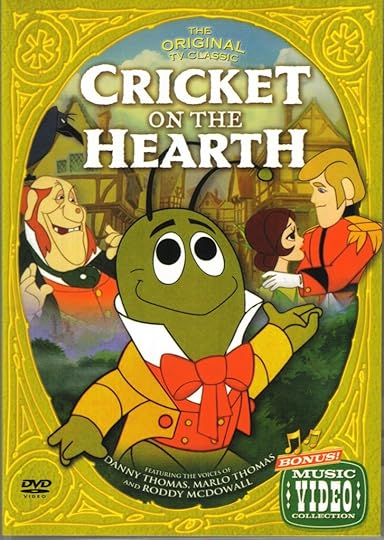
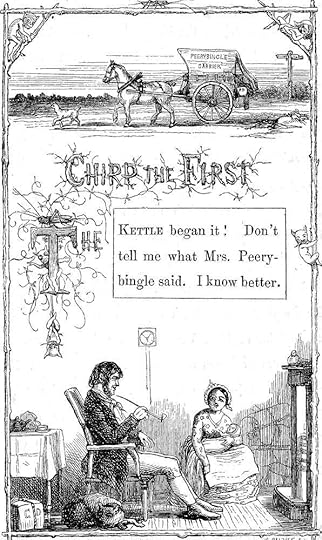

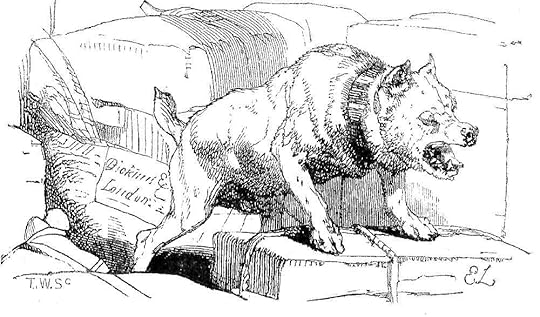
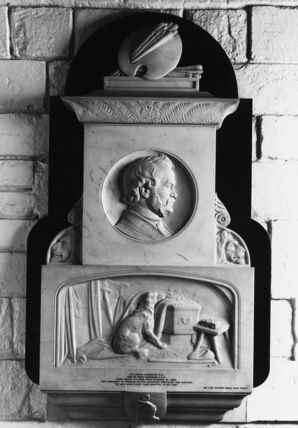
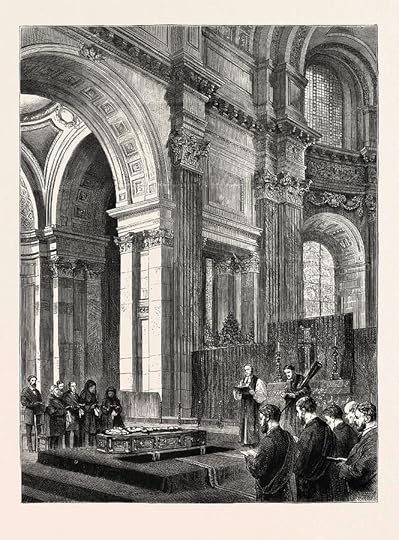
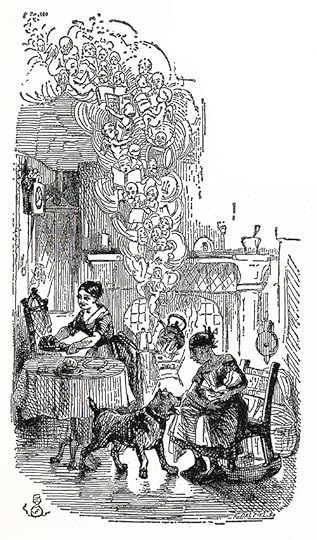
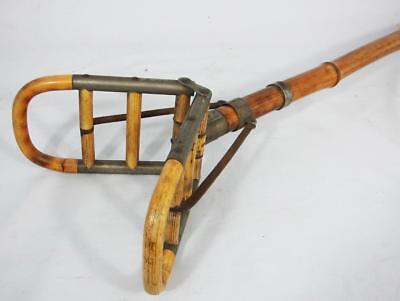
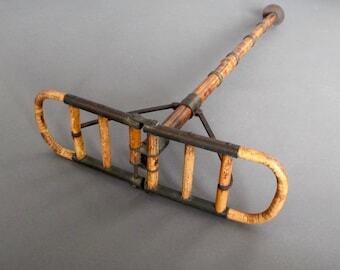
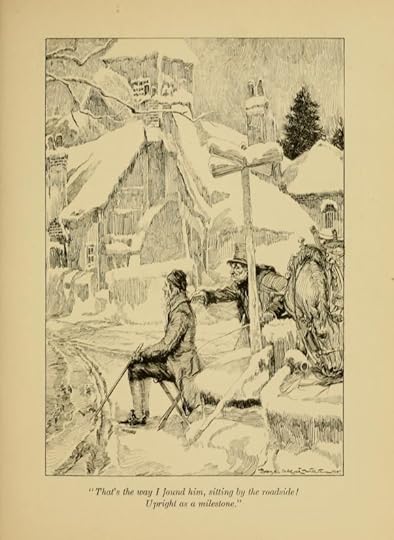


The title page from the 1878 Household Edition - Fred Barnard
The Cricket on the Hearth by Charles Dickens is the second of our seasonal reads to take us over into the new year. It was Charles Dickens's third Christmas book, which began with his perennially popular A Christmas Carol.
Yet again we are very lucky, and have Petra leading it, as she did so well last year with The Chimes. This third Christmas book The Cricket on the Hearth is a lovely story, subtitled "A Fairy Tale of Home" ... but I'll say no more now and pass you over to Petra :)
We will read this during the month between the dates of 20th December 2022 and 20th January 2023.